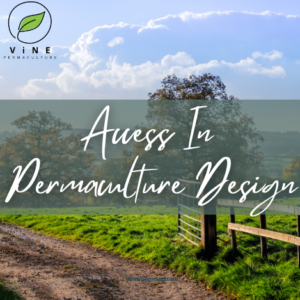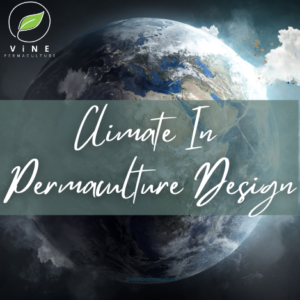What is Permaculture?
Permaculture is “a design science based on nature’s patterns”.
But what does that even mean?
Permaculture was created and coined by Bill Mollison and David Holmgren. The purpose was to create a “permanent agriculture” system. Permaculture is more sustainable for food production, energy resources, and community balance.
It is about observing and mimicking the natural patterns and elements of an area, and connecting them to create functionality. We use permaculture to grow food, restore habitats, regenerate land, store water, fire-proof areas, grow wood, reforestation, land regeneration, build businesses and communities, manage livestock, and more… all in harmony with the existing natural ecosystem. The following describes how and why this practice works.
Energy Efficiency (Inputs and Outputs)
Our main goal in permaculture is to catch and store energy. That may be water, solar, or gas. Our physical energy inputs matter too!
Human movement on permaculture properties
The aim of permaculture design is to cut human inputs by allowing nature to do what it does, naturally! This means less human intervention and fewer hours spent on property management. To achieve this we must understand the needs of existing animals, plants, trees, and humans. We must also understand the shape and slope of the land, as well as pest patterns and cycles.
Take for example the family kitchen garden. If the kitchen garden was further from the house, efficiency will decrease. By placing it close to the kitchen, it is located for quick harvests. This saves time, money, and energy for the occupants. This concept benefits market gardeners, cut flower farmers, cattle ranchers, and beyond!
Water
In a desert climate disturbed by human settlements, we find soils quickly dry out. But in wetter areas, we discover human settlements suffer from water damage. Understanding water pathways, cycles, and rainfall events are the first step in planning. Planning may look like earthworks, or water storage strategies. These methods cut damages while maximizing water harvesting potential.
Harvesting water is a sustainable method of providing for humans, animals, and landscapes. It decreases operation costs, grows more trees, and provides supportive and healthy habitats. The installation of on-site water harvesting systems reduces supply disruption and soil disturbance.
Another factor to consider is the intensification of weather events. Permaculture designers do their best to plan for future events by designing to accommodate the recorded ‘worst case scenario’… and then overplanning for the possibility of larger extremes.
Solar
Solar energy is very popular right now and is being installed in homes across the world! Many countries offer rebates to homeowners who choose renewable resources, over non-renewable ones. Harvesting solar energy makes the homeowner more self-reliant and less dependent. Being dependent on the power grid is subject to higher fees, and it may or may not be reliable! Solar is not without its controversy, but it is a cleaner form of energy.
Polycultural Systems are when 2 or more plants are grown in the same space, at the same time. This is usually to build soil, repel pests, increase crop yield, or attract pollinators. In permaculture, we call this “stacking functions”. This means utilizing an element in more than one way. Eg; in a “three sisters” design, corn, beans, and squash are grown together. These plants provide a service to each other! They increase soil fertility and biomass, provide shade or trellising, and food! (Food for humans, insects, and wildlife.) This kind of system is resilient and requires less management and human input.
This kind of design is promoting diversity and resiliency. Using the Three Sisters model as an example again… If a windstorm blew all of the corn down, you would still have squash and beans! But the monoculture corn farmer next door would have nothing.
Imagine if you had 6 fruit trees, and a storm wiped out 3 of them.
How much fruit would you get until (or if) they recover? How about if you had the same situation, but each fruit tree had a support network around them. Plants help improve the soil, and moisture retention, and provided food too. If you lost those 3 trees, you would still have food from the support species.
Permaculture focuses on the interactions between elements. It mimics natural relationships, producing sustainable life webs. Nature is the teacher!
Permaculture properties are designed mindfully by permaculture specialists. They observe, research, and plan. A good designer will consider the weather, and historical events (such as man-made or natural disasters). They will know how to foster and grow regenerative ecosystems that are inclusive of humans. In the words of Geoff Lawton, “a sustainable system produces more energy than it consumes .… Enough in surplus to maintain and replace its components and the system itself over its lifetime.” Our upfront input on a permaculture system may be high, but over the life of the system, it eventually takes care of itself. This is why permaculture works.
Places to visit or tour to learn more:



